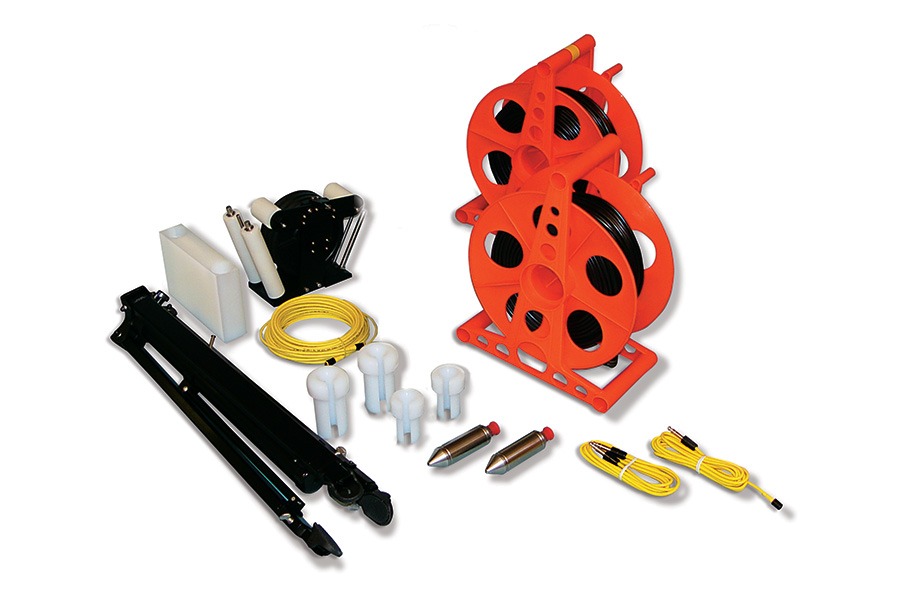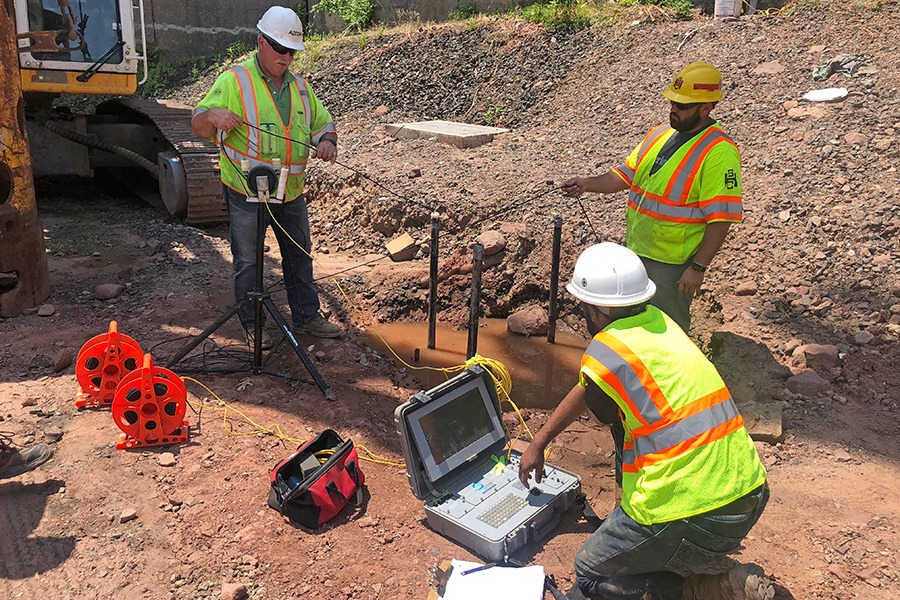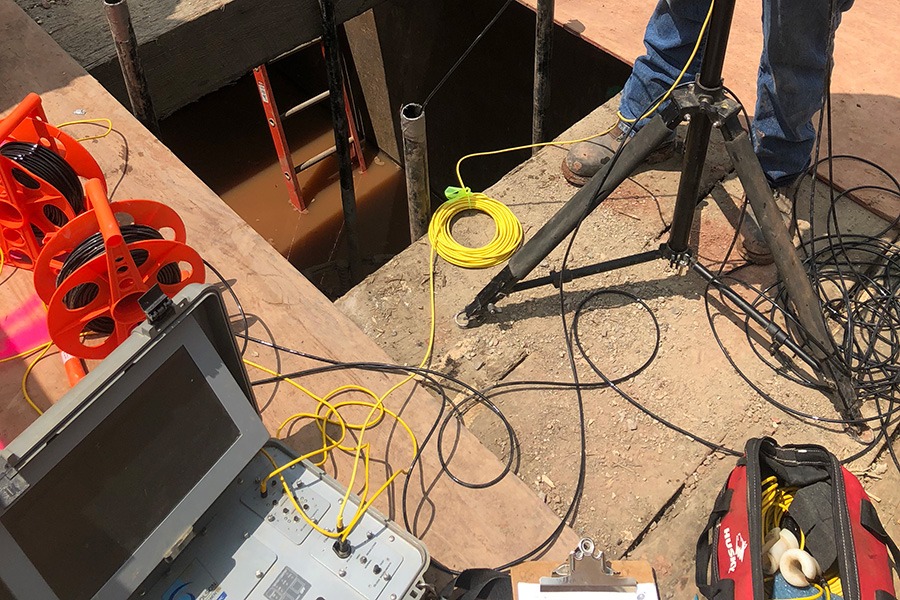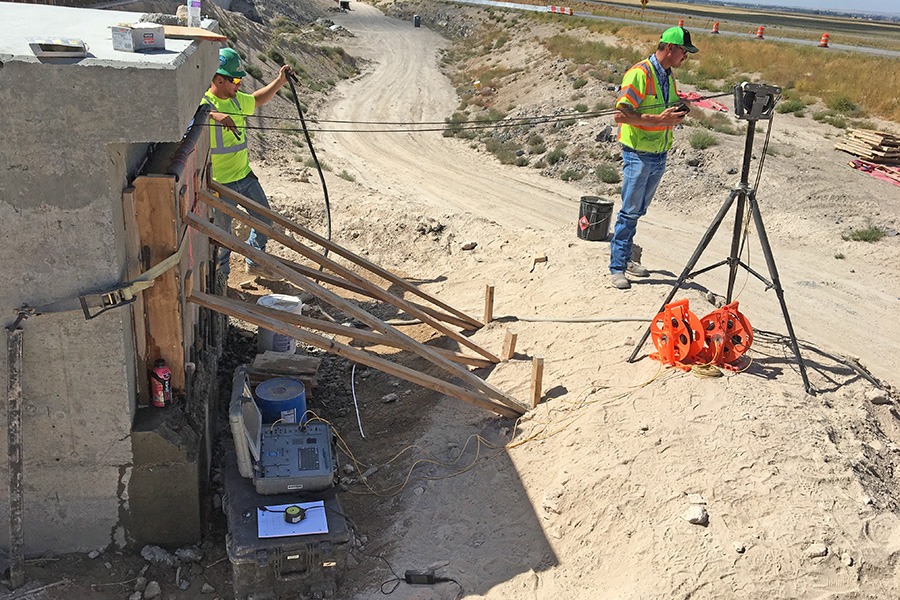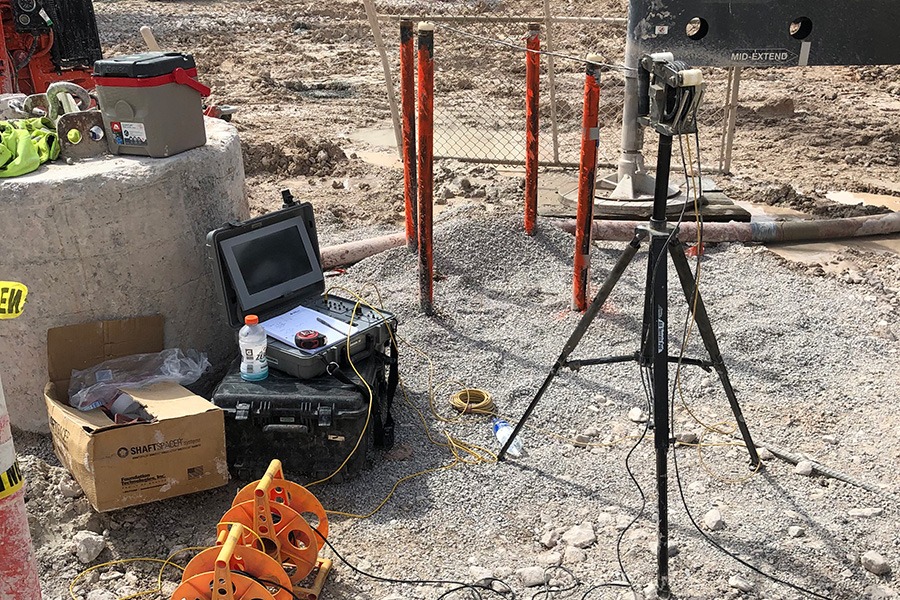Crosshole Sonic Logging
Olson's Best Selling Nondestructive Testing System to Test Newly Placed Shaft Foundations
The Crosshole Sonic Logging system is the most accurate and reliable technique for assessing the integrity of deep foundation elements constructed on-site from concrete or grout. The system is designed for Quality Assurance (QA) testing of newly placed critical drilled shaft foundations and auger cast piles, but can also be applied to slurry walls, mat foundations, and mass concrete pours. Using water-filled access tubes, CSL testing provides assurance that the foundation concrete is sound with no defects such as soil intrusions, necking, sand lenses, voids, etc.
Where defects exist, the extent, nature, depth, and approximate lateral location of the defects can be determined with the Crosshole Sonic Logging method and further refined with Tomographic Imaging Software, which is sold by Olson Instruments. (Note: Optional Tomo software is available for the CSL, UPV, and CS/DS add-on test methods)
A variation of the CSL method, called Single-Hole Sonic Logging (SSL) can also be used on smaller diameter drilled mini-piles and auger cast piles. The Single-Hole Sonic Logging method is used in cases where only a single access tube can be placed in a deep foundation, and tests the concrete quality in the region around the single access tube.
Data Platform Required, Sold Separately
 |
Freedom Data PC |
Materials Tested:
- Drilled Shafts (Bored Piles)
- Diaphragm Walls
- Slurry Walls
- Mat Foundations& Seal Footings
- Mass Concrete Pours
- Pressure Injected Footings
- Auger Cast Concrete Piles
- Water Saturated Media
- Cemented Radioactive Wastes
Test For:
- Cracks
- Soil/Water Intrusions
- Uncured or Weak Concrete
- Voids
- Necking
- Sand Lenses
Meets ASTM:
- ASTM D6760-08
Meets ACI:
- ACI 228.2R
Key Features & Specifications
| System design allows for fast and accurate field measurements, plastic Test Block to check system operation beforehand | Typical testing rate: 3-4 minutes per test tube pair (depending on experience of user and shaft length) |
| Tests up to 20 ft (6.5m) through concrete, sensitive enough to detect small defects | Meets ASTM and RILEM standards |
| Maximum pull rate: ~3 feet/second (1.0 m/s) in “Normal” position, ~ 0.75 ft/s (0.3 m/s) in “High” position | Depth Resolution: ~2.2 inches (5.6 cm) in “Normal”, 0.55 inches (1.4 cm) in “High” |
| Hydrophones (42 KHz) are interchangeable as both source and receiver | Hydrophone Transducer Type: Piezoelectric with Center Frequency of 42 kHz |
| Real-time waveform and log results display while testing, alternate CSL log display formats available at a key stroke | Advanced user-tunable automatic first signal arrival picking algorithm |
| Software allows for Automatic Log and optional Report Generation in Microsoft Word (tailored to customer’s requirements) | Single hole and Crosshole Capable |
| Smart logging algorithm that graphically shows already logged tube pairs as well as the next tube pair to be logged | Optional Tomographic Imaging Software available |
CSL-1 System
| Description: | Test For: | Applicable On: |
| Crosshole Sonic Logging tests for QA of newly placed drilled shafts and diaphragm walls. Includes 2 hydrophones for testing one tube pair per log pull, in addition to the system component includes the CSL software, written and tested at Olson Instruments' corporate office in Colorado, USA. |
|
|
TOMO-1 Software [Optional]
| Description: | Test For: | Applicable On: |
| Crosshole Tomography (CT) testing and analysis is used to generate velocity images of anomalies between tested tube pairs in order to better judge the extent and severity of defects. With the CSL Tomo software, the CT method uses data from multiple CSL logs at different source-receiver height offsets to generate 2-D image slices of the material between a pair of access tubes in a shaft. When data is collected between multiple access tubes, the data sets can be combined to create a 3-D image model of the interior of the shaft concrete, delineating defects. |
|
|
Hands-on training is available for all of our NDE test methods at our Wheat Ridge, Colorado (USA) location, which is a suburb located approximately 15 minutes northwest of downtown Denver. Training may be available at your location by one of our agents/engineers upon special arrangement.

